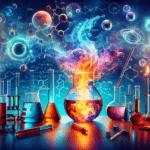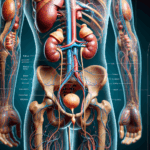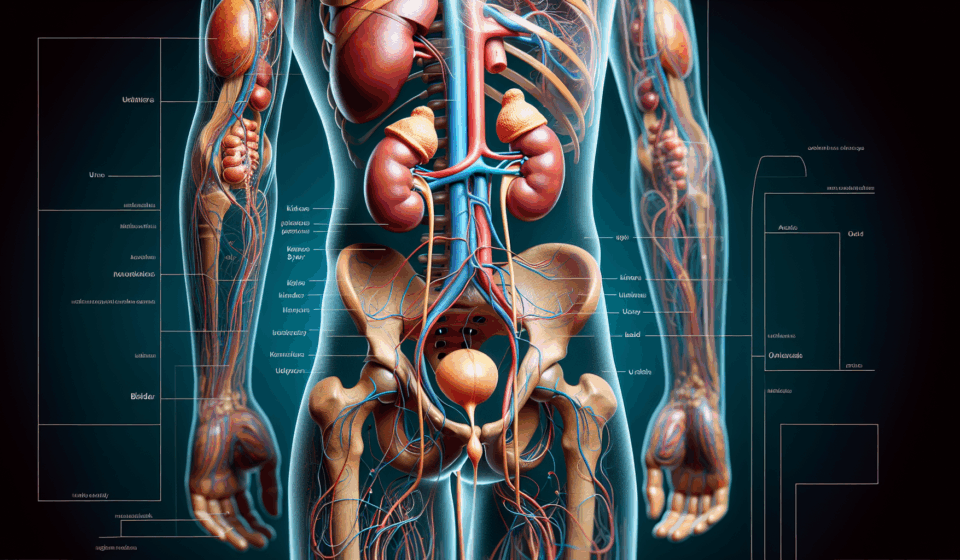
EXCRETION
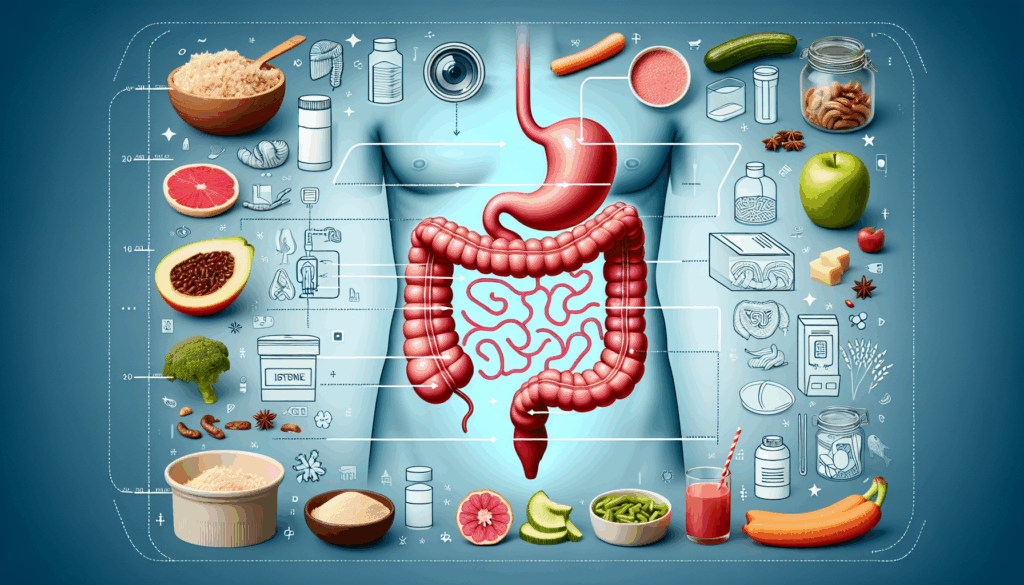
Excretory System Components:

- Kidneys (a pair): Remove nitrogenous wastes like urea or uric acid from the blood.
- Ureters (a pair): Transport urine from the kidneys to the urinary bladder.
- Urinary Bladder: Stores urine.
- Urethra: Releases urine out of the body.
Process:
- Blood Filtration: Kidneys filter wastes from the blood.
- Urine Transport: Ureters carry urine to the bladder.
- Urine Storage and Release: Urinary bladder stores urine, which is eventually expelled through the urethra.
Egestion vs. Excretion:
- Egestion:
- Involves the discharge of undigested matter.
- Occurs through the digestive tract and is expelled via the anus.
- Excretion:
- Involves the removal of metabolic waste products, such as nitrogenous wastes.
- Specifically refers to the process of waste removal through the excretory system, primarily in the form of urine.
Kidney: Structure and Function
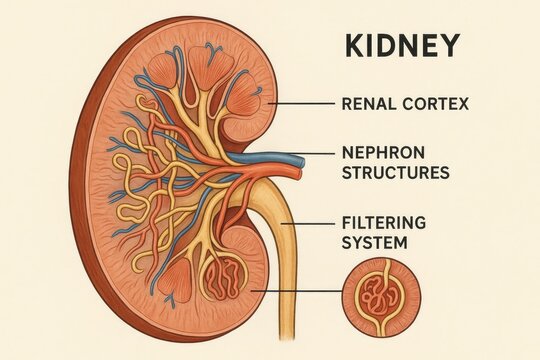
KIDNEY STRUCTURE
- Appearance: Reddish-brown and bean-shaped.
- Location: Situated at the back of the abdominal cavity, one on each side of the backbone.
- Positioning: The left kidney is slightly higher than the right due to the liver’s position.
Function:
- Blood Filtration:
- Blood enters the kidney through the renal artery carrying nitrogenous wastes.
- After filtration, clean blood exits via the renal vein.
- Urine Formation:
- Waste products are converted into urine, which is transported through the ureter to the bladder.
- Osmoregulation:
- Removes excess water from the body to maintain fluid balance.
- Excretion of Nitrogenous Wastes:
- Eliminates wastes like urea and uric acid from the blood.
- Converts these wastes into urine.
- Urea: A byproduct of nitrogen metabolism that occurs in the liver.
- Regulating Blood pH:
- Helps maintain the acid-base balance of the blood.
- Maintaining Homeostasis:
- Controls the amount of water, ions, and other substances in the blood to keep the internal environment stable.
Nephrons:
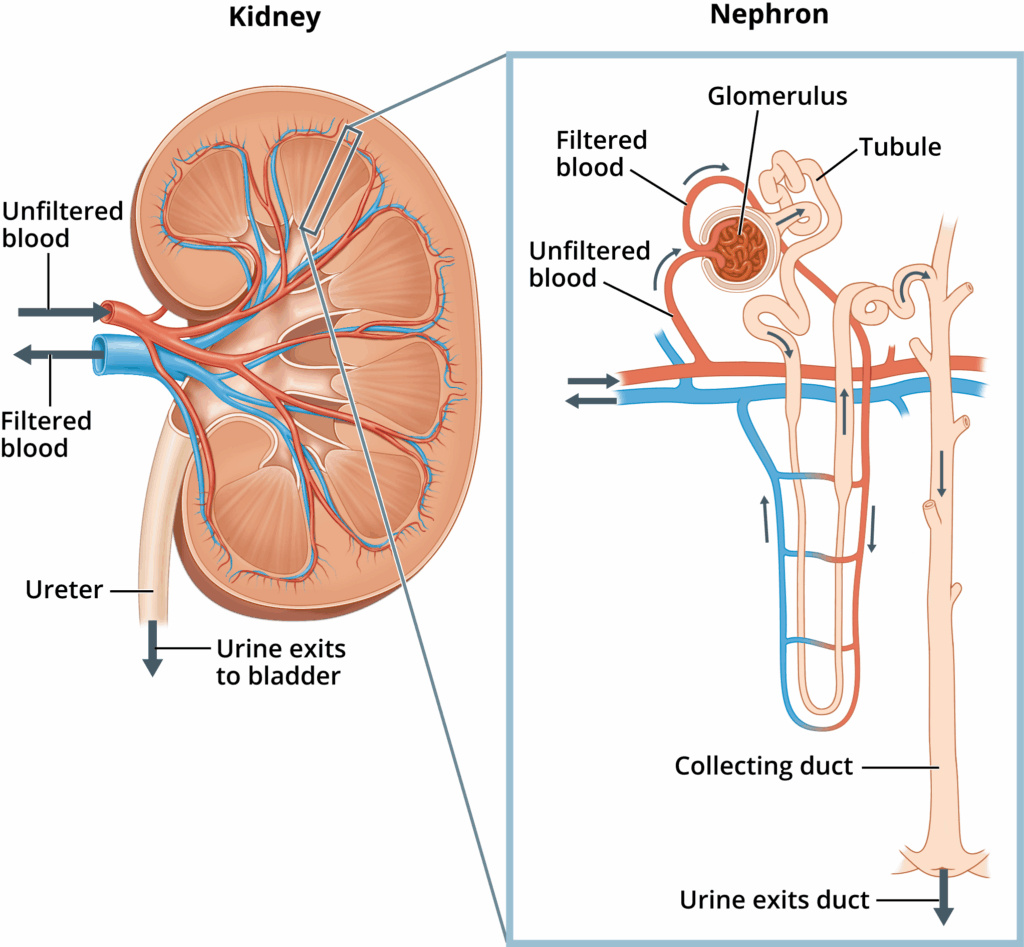
- Each kidney contains numerous tiny filtration units called nephrons.
- Nephrons are the structural and functional units of the kidney, essential for its filtration process.
Structure of Nephron
Each nephron consists of:
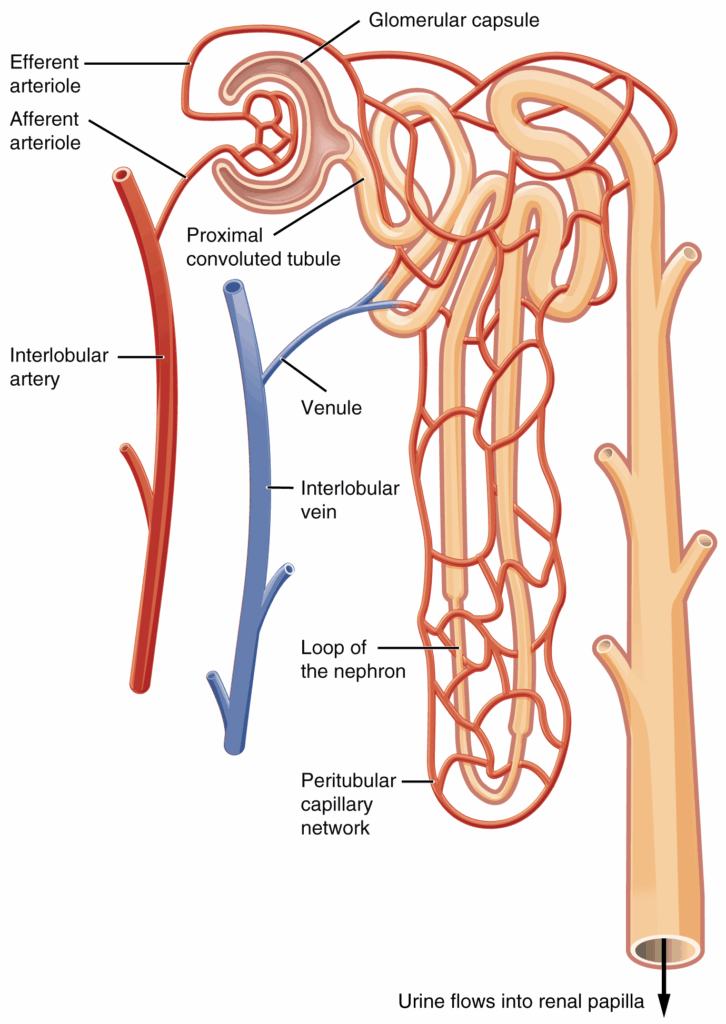
Bowman’s Capsule:
- Description: Cup-like, double-walled structure.
- Function: Acts as a blood-filtering component.
- Components: Contains a network of capillaries called the glomerulus.
- Process: Blood with waste enters through the renal artery into the glomerulus for filtration.
Renal Tubules:
- Description: Long, coiled tubes in the kidney.
- Function: Increases surface area for urine formation.
- Process: Leads from the Bowman’s capsule to the collecting duct, where filtered urine is collected.
Ultrafiltration
- Location: Occurs in the glomerulus.
- Process:
- High pressure forces substances from the blood into Bowman’s capsule.
- Includes both harmful and beneficial substances.
- Result: The filtered liquid is called glomerular filtrate.
Artificial Kidney (Hemodialysis)
- Importance of Kidneys:
- Vital for survival, removing waste from the body.
- Factors like infections or injury can impair kidney function, leading to waste accumulation, which can be fatal.
- Artificial Kidney:
- A device for removing nitrogenous wastes via dialysis.
- Contains tubes with semipermeable linings in a tank of dialyzing fluid.
- The fluid has the same osmotic pressure as blood but lacks nitrogenous wastes like urea.
Process of Dialysis

- Blood Filtration:
- Patient’s blood is passed through tubes in the dialysis machine.
- Waste products diffuse from the blood into the dialyzing fluid.
- Purified blood is then returned to the patient’s body.
- Mechanism:
- Blood flows along one side of a cellophane membrane, while dialysis fluid flows on the opposite side.
- This setup maintains a concentration gradient, facilitating waste removal.
Differences:
- Artificial Kidney:
- Lacks the process of reabsorption.
- Simply filters waste without reclaiming useful substances.
- Natural Kidney:
- In a healthy adult, processes about 180 liters of filtrate daily.
- Only 1-2 liters are excreted as urine.
- The rest is reabsorbed in the kidney tubules, conserving water and nutrients.
Organ Donation
- Definition:
- A generous act where a person donates an organ to another individual.
- Can be done with the donor’s consent while alive or by family consent after death.
- Eligibility:
- Anyone can become a donor, regardless of age or gender.
- Organ Transplantation:
- Involves surgical removal from the donor and transplantation to the recipient.
- Common organs transplanted include cornea, kidneys, heart, liver, pancreas, lungs, intestines, and bone marrow.
Timing:
- Most donations occur after death or when declared brain dead.
- Some organs, like a kidney or part of a liver, can be donated while alive.
Excretion in Plants
- Gaseous Waste Products:
- Plants release gases like carbon dioxide and water vapor during respiration at night.
- Oxygen is released during photosynthesis in the daytime.
- Structures Involved:
- Stomata: Located in leaves.
- Lenticels: Found in stems.
Liquid Waste Products
- Transpiration:
- Plants eliminate excess water produced during respiration.
- Storage in Xylem:
- Waste substances like resins and gums are stored.
- Gums: Metabolic products of plant tissues.
- Resins: Oxidation products of essential oils.
- Example:
- Rubber Plant: Exudes latex, used in the tire industry, as an excretory product.
- Solid Waste Products
- Storage:
- Stored in cellular vacuoles and tissues with dead cells.
- Location:
- Found in leaves, bark, etc., which may fall off or be shed by plants, like in deciduous plants.
- Excretion:
- Some solid waste substances are excreted into the surrounding soil.
Useful Plant Wastes
- Tannin:
- Stored in trunks of plants like oak.
- Used in leather treatment.
- Essential Oils:
- Excreted by plants like sandalwood.
- Used for various household purposes.
- Gums:
- Used to make adhesives.
- Resins:
- Used in varnishes and glazing agents.
- Natural Rubber:
- Used as raw material in the tire industry.


